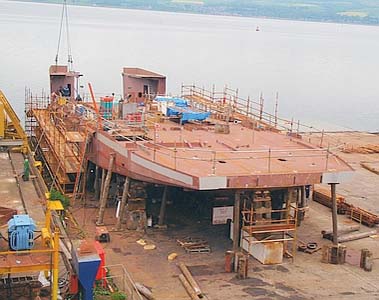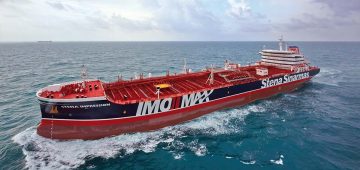Scotland’s Ferguson Marine Engineering Limited has been selected as the preferred tenderer for the £97 million contract to build two ferries for the Caledonian Maritime assets Ltd. fleet. Once finalised, the new contract for the largest vessels to be built at the shipyard since 2001 will create new jobs at the shipyard and secure employment for the existing workforce of around 150 people, providing a boost for shipbuilding on the Clyde and the local economy. The ferry operator will confirm the contract award in due course, subject to agreement on final terms and conditions. Ferguson Marine will undertake the detailed design and construction work of the vessels, as well as their testing, equipping, launching and delivery. The new ferries will be dual-fuel enabled so they can operate on liquefied natural gas (LNG) and marine diesel. The first ferry is expected to be delivered in early 2018, with the second vessel following a few months later. The ships are designed to carry 127 cars or 16 HGV’s or a combination of both and up to 1,000 passengers. The new builds are earmarked for the Ardrossan-Brodick and the UIG Triangle routes, although the final decision on vessel deployment rests with the current operator, CalMac Ferries Ltd. The decision to award this contract to a Scottish yard is undoubtedly a very politically loaded one but, if a success, will allow Ferguson’s to return to a bygone era.

CMAL has also announced the name for Scotland’s third hybrid ferry (above), which is scheduled to be launched in December 2015. Catriona was the most popular name, receiving 44% of the votes cast in the competition run on the CMAL website. The ferry is currently being built in Port Glasgow at Ferguson Marine Engineering Limited’s shipyard and will be the third ferry in the Scottish Literature Class. The first and second hybrid ferries, Hallaig and Lochinvar, entered service in 2013 and 2014.
Catriona is the title of a novel written by Robert Louis Stevenson in 1893 and is the sequel to the highland adventure Kidnapped, following the further adventures of its hero David Balfour. The new hybrid ferry will be built to accommodate 150 passengers, 23 cars or two HGVs, with a service speed of nine knots. The machinery arrangement introduces a high level of equipment redundancy allowing the vessel to continue operation with an engine failure or no diesel fuel availability for any reason and also has the capability of operating the Sunday Raasay to Sconser service on batteries alone with zero emissions from the vessel.

In slightly warmer climes, Spanish shipyard LaNaval has reached an agreement to build two LNG-powered ferries, said to be the biggest ferries ever built in Spain and the first in the country to run on gas, for shipping company Baleària. Under the agreement, expected to be finalized in the next two months, the first vessel will be built from next year with delivery by the first quarter of 2018. The shipyard valued the deal at €350 million. Although particulars have not been released, LaNaval said the dual-fuel ships will be among the biggest ferries operating in Europe. They are intended to offer a 30% reduction in Co2 emissions compared with conventionally fuelled vessels. The new build orders follow Baleària’s decision to convert ro-ro ferry Abel Matutes to LNG power, with the retrofitted vessel to begin service towards the end of 2016.






Comments
Sorry, comments are closed for this item